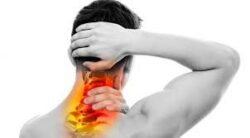Understanding How Pain Affects the Body!

Pain is an uncomfortable feeling that tells you something may be wrong. It can be steady, throbbing, stabbing, aching, pinching, or described in many other ways. Sometimes, it’s just a nuisance, like a mild headache. Other times it can be debilitating, like not being able to get up and walk around.
Pain can bring about other physical symptoms, like nausea, dizziness, weakness or drowsiness. It can cause emotional effects like anger, depression, mood swings or irritability. Perhaps most significantly, it can change your lifestyle and impact your job, relationships and independence.
2 types of pain
Acute pain -usually severe and short-lived and is often a signal that your body has been injured.
Chronic pain - ranges from mild to severe, is present for long periods of time, and is often the result of a disease that may require ongoing treatment.
Why do you feel like you feel?
The autonomic (happens without thinking) nervous system comprises two parts- the sympathetic and parasympathetic nervous systems. The sympathetic nervous system (activates the fight or flight response during a threat or perceived danger) and the parasympathetic nervous system (which restores the body to a state of calm.)
THE SYMPATHETIC NERVOUS SYSTEM:
FIGHT OR FLIGHT RESPONSE
The fight or flight response which is commonly known is our body’s reaction to external stimuli. When we are faced with a perceived threat of any kind, whether physical or emotional, our sympathetic nervous system kicks into gear and brings about automatic and involuntary responses, such as increased heart rate, elevated blood pressure, heightened awareness, elevated respiratory rate, and more sweating. The sympathetic nervous system also shuts down many parasympathetic responses in order to utilize more energy for the fight or flight response.
THE PARASYMPATHETIC NERVOUS SYSTEM:
REST AND DIGEST
The parasympathetic nervous system affects the same body functions as the sympathetic nervous system, but in a completely different way. It works to slow down certain responses and bring about a state of calm to the body, allowing it to rest, relax, and repair itself. The primary function of the parasympathetic nervous system is to maintain long-term health and a healthy balance across all the body’s functions. Parasympathetic responses include an increase of digestive enzymes, decreased heart rate, constriction of bronchial tubes in lungs, and more relaxed muscles.
WHY DOES THIS MATTER?
Both the sympathetic and parasympathetic nervous systems are vital to our health and survival. However, for our bodies to live with optimal health and proper function for as long as possible, there must be a balance between the two.
When there is a miscommunication between your brain and the impulses that promote sympathetic responses, your body will be functioning in fight or flight mode far too often and for far too long, and this can have negative consequences on your overall health. This is when we are dealing with pain for too long. If your Sympathetic Nervous system is continually active you will experience difficulty with digestion, breathing, relaxing and more. It is not uncommon to experience other bodily dysfunctions when you are experiencing pain.
Can you imagine going throughout your day with a heighted awareness to the slightest thing, sweating, shallow breathing? That is what many people are currently feeling.
**Main Point: Pain that last longer than needed (Chronic pain) puts you in a constant state of fear and can cause a disruption in other bodily systems (making sleeping, eating, relaxing and enjoying being around others difficult). **Thus, it is important to address acute pain immediately, so that our sympathetic and parasympathetic systems can remain in balance. If you need help bringing your body into balance, give us a call at 815-464-2546.
What we treat - Anointed Hands Physical Therapy
- Low back pain
- Spinal stenosis
- Vertebral Compression Fractures
- Cervical and lumbar facet joint disease
- Sciatica/Radiculopathy ("pinched nerve")
- Sacroiliac joint disease
- Failed back surgery pain (FBSS) / Post-Laminectomy Neuropathic Pain
- Neuropathic (Nerve) pain
- Head pain / Occipital neuralgia (Scalp/head pain)
- TMJ
- Hip pain
- Intercostal neuralgia (Rib pain)
- Peripheral neuropathy (Diabetic nerve pain)
- Complex regional pain syndrome (Reflex Sympathetic Dystrophy - RSD)
- Herniated discs and degenerative disc disease (discogenic pain)
- Neck pain
- Shoulder and knee arthritic pain (osteoarthritis)
- Myofascial (Muscular) pain
- Post surgical pain
- Cancer pain (pancreatic, colorectal, lung, breast, bone)
- Pain from peripheral vascular disease
- Post-herpetic neuralgia (shingles pain)
- Nerve entrapment syndromes
- Spasticity related syndromes/ pain
- Spinal Cord Injury (central pain)
- Pelvic pain
- Thoracic outlet syndrome
- CRPS

